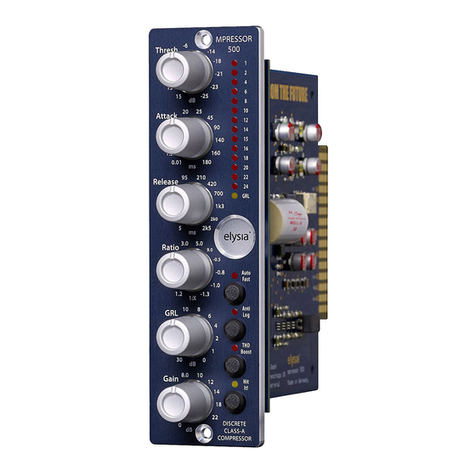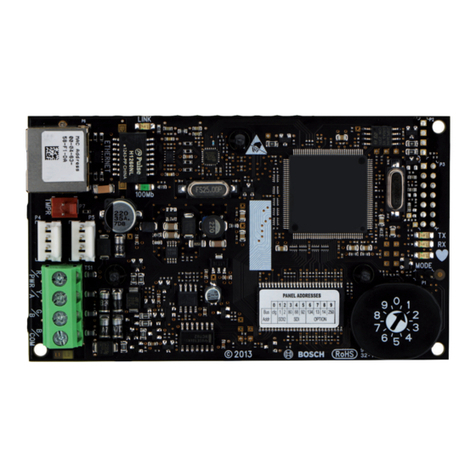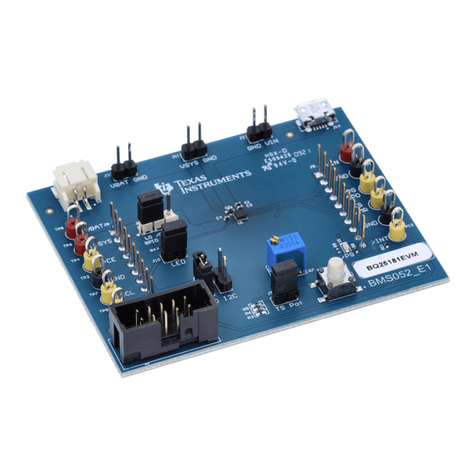TraceTek TTDM-128 User manual

User Manual
�
TTDM-128
TraceTek Leak Detection
Master Module
TTDM-128

H56853 12/03 2
H56853 12/03 3
TTDM-128
User Manual
Table of Contents
Overview ......................................................................... 3
System Congurations ...................................................................3
Quick Setup..................................................................... 5
Common Setup Procedures...........................................................5
Conguration Specic Setup..........................................................7
Introduction..................................................................... 9
The TraceTek TTDM-128 Network ................................................9
Description of TraceTek Leak Detection System..........................10
TTDM-128 Features ...................................................... 11
Identifying TTDM-128 Features.................................................... 11
The TTDM-128 Keypad................................................................12
The TTDM-128 System Display ...................................................13
Normal Operation ......................................................... 14
Current Event/Status Display ......................................................14
Navigating the Menu Structure.....................................................14
Status of Individual SIM channels ................................................18
Modifying Settings for Individual SIM Channels...........................20
Events History Log .......................................................................22
Detailed Setup............................................................... 23
General Set-up.............................................................................23
Leak Setup ...................................................................................24
SIM Network.................................................................................25
TTDM Network .............................................................................27
Self-Test .......................................................................................28
Event Response ........................................................... 29
Leak Detection and Location Events............................................29
Service Events .............................................................................30
Fault Events .................................................................................31
Multiple Events.............................................................................32
Maintenance.................................................................. 34
Appendix 1 - Events Glossary..................................... 36
Appendix 2 - Connection to Other Devices................ 37

H56853 12/03 2
H56853 12/03 3
TTDM-128
User Manual
READ BEFORE USE
Please read these instructions carefully and keep them in a safe place (preferably close to
the TTDM) for future reference. The instructions provided in this booklet must be followed
carefully to ensure proper operation. If the equipment is used in a manner not specied by
the manufacturer, the protection provided by the equipment may be impaired.
PREPARATION
Before operation, follow the installation instructions to ensure that each module is properly
mounted and wired. If these steps have not been taken, refer to the installation documents
provided for each module. To obtain this literature or for technical assistance, contact your
local TraceTek distributor or visit our web site (http://www.tycothermal.com).
IMPORTANT: There should be a “System Map” for each sensor circuit. The system map
should show the sensing cable layout with reference to readily identiable landmarks and
with actual distance measurements every 5 m (16 ft) throughout the system. The map is
normally completed at the time the leak detection system is commissioned. Ensure that a
copy of the system map is kept near the TTDM-128 module. If the TTDM-128 is connected
to a building management system, ensure that a copy of the system map accompanies
the building management system.
Notes
§ Throughout this manual, the examples shown use distances in meters.
§ Later versions of software may provide new features and change certain other
details. This manual documents UI software version 3.10i.
System Congurations
The TraceTek TTDM-128 module has many possible applications and congurations. The
TTDM-128 can be congured as a stand-alone leak detection panel, or it can be used in
a network of other TraceTek leak detection modules, such as the TTSIM sensor interface
module, the TT-NRM network relay module, or additional TTDM modules. In all cases,
each TTDM-128 offers the following features and capabilities:
§ Directly monitor the equivalent of up to 1500 m (5000 ft) of TraceTek sensor cable and
point sensors.
§ 1024 event memory.
§ Built-in status and alarm relays.
§ Optional 4-20 mA output.
Overview

H56853 12/03 4
H56853 12/03 5
TTDM-128
User Manual
TTDM-128 SINGLE CHANNEL STAND ALONE SYSTEM
(See Quick Setup on page 7)
§ TTDM-128 with up to 1500 m (5000 ft) of TraceTek sensor cable, or a combination
of sensor cable and point sensors.
SINGLE CHANNEL WITH REMOTE REPEATER
(See Quick Setup on page 7)
§ Stand-alone system with additional TTDM-128 acting as a remote display.
§ Remote panel mimics all conditions at the primary panel.
§ Primary panel acts the same as a stand-alone TTDM-128 system.
§ Modbus interface to a host computer is only available at the remote TTDM.
SINGLE TTDM-128 WITH NETWORK SYSTEM
(See Quick Setup on page 8)
• A single TTDM-128 is used as the master module for a network of up to 126
additional TraceTek modules (TTSIM, TT-NRM).
MULTIPLE TTDM-128 WITH NETWORK SYSTEM
(See Quick Setup on page 8)
• The same as the single TTDM network system, except with additional TTDM-128’s
acting as slave modules.
• One TTDM-128 acts as the network master, the other TTDM-128’s act the same as
stand-alone systems.
• Additional TTSIM and TT-NRM modules can be installed on the network, up to a
total of 127 modules (including TTDM’s).
Twisted
pair
network
Up to 1500 m (5000 ft)
sensing cable per TTSIM
Maximum of
126 TTSIMs
Add TTDMs into the SIM network
where it makes sense to have a local
display, relays, etc.
Primary TTDM
(Slave)
Remote Repeater
TTDM (Master)
RS-485 twisted
pair cabling

H56853 12/03 4
H56853 12/03 5
TTDM-128
User Manual
Common Setup Procedures
All modules, cables and sensors should be installed in accordance with their installation
instructions prior to performing the setup procedures.
BASIC TTDM-128 SETUP (FOR ALL CONFIGURATIONS)
► Power up the TraceTek system. Wait while the TTDM completes its self test and network
initialization process.
► With the TTDM on the Current Event/Status display, press the MENU key.
► Using the DOWN arrow key, scroll to General Setup and press ENTER.
▪ Set the Time and Date (adjust values as necessary using the arrow keys, then press
ENTER).
▪ Select the desired language.
► Press MENU to return to the Current Event/Status display.
SETTING TTSIM ADDRESSES ON NETWORK SYSTEMS
If your system includes TTSIM modules, their network addresses must be set to unique
values in the range from 2 to 127 (address 1 is the default address of the TTDM’s internal
Sensor Interface board). If TT-NRM network relay modules are installed, the TTSIM
addresses must be different than any TT-NRM addresses.
► With the TTDM on Current Event/Status display, press MENU.
► Use the DOWN arrow key to select SIM Network, then press ENTER.
► For each TTSIM (perform complete procedure before continuing to next TTSIM):
▪ Place the TTSIM conguration jumper in the CFG position (see TTSIM Installation
Instructions).
▪ With the TTDM in the SIM Network menu, use the UP and DOWN arrow keys to select Set
SIM Address, then press ENTER.
▪ Press ENTER again, use the arrow keys to input the new TTSIM address, then press ENTER.
▪ Return the TTSIM conguration jumper to the normal operating position (see TTSIM
Installation Instructions).
▪ Press ESC twice.
► Press MENU to return the TTDM to Current Event/Status Display mode.
CHANGING LEAK CHANNEL ID TAGS
Each leak detection channel (TTDM or TTSIM) can be given a unique alpha-numeric
identication tag. To change the ID tag of a channel:
► With the TTDM in normal operating mode and displaying the status of the desired leak
detection channel, press the DOWN arrow key:
▪ Use the DOWN arrow key to scroll to select ID, then press ENTER.
▪ Using the LEFT and RIGHT arrow keys to select the character position, and the UP and DOWN
arrow keys to change the letters and numbers, enter the desired ID tag. Press ENTER when
nished.
▪ Press MENU to return to the Current Event/Status Display.
Quick Setup
Time saving hint
▪
If the space to the right is blank, press
the right arrow to duplicate the last
letter entered
▪
Use the
RESET
key to jump between
letters, numbers and blank

H56853 12/03 6
H56853 12/03 7
TTDM-128
User Manual
CHANGING LEAK CHANNEL UNITS
The unit of measure for circuit length can be changed individually by channel, or for all
channels.
To change units for an individual channel:
► With the TTDM in the Current Event/Status Display and displaying the status of the desired
leak detection channel, press the DOWN arrow key.
► Use the DOWN ARROW key to select TestLength, then press ENTER.
► Use the UP/DOWN arrow keys to select the desired units (feet, meters or zones) then press
ENTER.
► Press MENU to return to the Current Event/Status Display.
To change units for all channels at once:
► A password is required to access the Special menu and change all units. To input the
password:
▪ With the TTDM in the Current Event/Status Display press the MENU key.
▪ Use the DOWN arrow key to select General Setup, then press ENTER.
▪ Use the DOWN arrow key to select Password, then press ENTER.
▪ Use the arrow keys to input the password 04000, then press ENTER.
▪ Press ESC.
► With the display showing the General Setup menu, use the DOWN arrow key to select Special,
then press ENTER.
► Use the DOWN arrow key to select Set All Units, then press ENTER.
► Use the UP/DOWN arrow keys to select the desired units (feet, meters or zones) then press
ENTER.
► Press MENU to return to the Current Event/Status Display.
SET HOST PORT PARAMETERS
For TTDM’s that are connected to a host computer, DCS or building management system,
the host port parameters must be set.
► With the TTDM in the Current Event/Status display, press MENU.
► Use the DOWN arrow key to select TTDM Network, then press ENTER.
► Use the DOWN arrow key to select the desired parameter, then press ENTER. If asked for a
password, input 00010 and press ENTER. The parameters that can be changed are:
▪ Baud: select host port baud rate.
▪ Modem: Dene modem dialing strings.
▪ 485 Address: Set the TTDM’s MODBUS address.
▪ TTDM: Select the host port mode (Master or Slave). The password for this parameter is
04000.
NOTE: For communication with automation systems, PC’s and other host systems, set the
port to Master. Slave mode is used only for communication to a TTDM operating as a
Remote Display.

H56853 12/03 6
H56853 12/03 7
TTDM-128
User Manual
Conguration Specic Setup
STAND ALONE SINGLE CHANNEL SYSTEM
► Perform Basic TTDM-128 Setup (page 5).
► Assign the leak detection channel tag if required (page 5).
► Perform the Host Port Setup if required (page 6).
SINGLE CHANNEL WITH REMOTE REPEATER
Before powering up the system:
► Remove the internal Sensor Interface Board from the Remote Repeater TTDM.
► Connect the RS-485 host port (J13) of the Primary TTDM to the TraceTek Network port (J10)
of the Remote Display TTDM.
You can now power up the system and proceed with setup as follows:
At the Primary (Slave) TTDM
► Perform Basic TTDM-128 Setup (page 5).
► Assign the leak detection channel tag if required (page 5).
► Make sure that the Host Port Mode Selector Switch on the User Interface board is set to RS485.
► Set the host port parameters as follows (page 6):
▪ Set baud rate to 9600.
▪ Set TTDM mode to Slave.
At the Remote Repeater (Master) TTDM
► Perform Basic TTDM-128 Setup (page 5). Be sure the settings match those of the Primary
TTDM.
► Perform the Host Port Setup as required (page 6). Check that the TTDM mode is set to
Master.
► Change the Communication Timeout parameter:
▪ With the TTDM in the Current Event/Status display, press MENU.
▪ Use the DOWN arrow key to select General Setup, then press ENTER.
▪ Use the DOWN arrow key to select Password, then press ENTER.
▪ Input the value 04000, then press ENTER followed by ESC.
▪ Use the DOWN arrow key to select Special, then press ENTER.
▪ Use the DOWN arrow key to select Comm Timeout, then press ENTER.
▪ Use the arrow keys to input the value 300 ms, then press ENTER.
▪ Press MENU to return to the Current Event/Status display.
Primary TTDM
(Slave)
Remote Repeater
TTDM (Master)
RS-485 twisted
pair cabling
Remote Display (Master) TTDM
J10
XMTRSEXTRS-485
485–
4
485+
3
Primary (Slave) TTDM
J13
COM PORTEXTRS-232/485
TX/B
485 –
6
RX/A
485+
5
Remote repeater RS-485 connection diagram

H56853 12/03 8
H56853 12/03 9
TTDM-128
User Manual
► Initialize the SIM network:
▪ With the TTDM in the Current Event/Status display, press MENU.
▪ Use the DOWN arrow key to select SIM Network, then press ENTER.
▪ Use the DOWN arrow key to select Init Network, then press ENTER.
► Change the leak detection channel ID tags (page 5) to match what was set at the Primary
TTDM.
SINGLE TTDM-128 WITH NETWORK SYSTEM
► Perform Basic TTDM-128 Setup (page 5).
► Perform the Host Port Setup if required (page 6).
► Assign a unique address to each TTSIM (page 5).
► Change the leak detection channel ID tags for each TTSIM if required (page 5).
MULTIPLE TTDM-128 WITH NETWORK SYSTEM
One of the TTDMs must be selected as the master TTDM; all remaining TTDM’s in the
network will operate in “slave” mode.
At each slave TTDM:
► Perform Basic TTDM-128 Setup (page 5).
► Assign the leak detection channel tag (SIM ID) if required (page 5).
► Make sure that the Host Port Mode Selector Switch on the User Interface
board is set to
RS485.
► Set the host port parameters as follows (page 6):
▪ Set baud rate to 9600.
▪ Set TTDM mode to Slave.
► Initialize the SIM Network (page 26).
At the master TTDM:
► Perform Basic TTDM-128 Setup (page 5). Be sure the settings match those of the Primary
TTDM.
► Perform the Host Port Setup as required (page 6). Check that the TTDM mode is set to
Master.
► Change the Communication Timeout parameter:
▪ With the TTDM in the Current Event/Status display, press MENU.
▪ Use the DOWN arrow key to select General Setup, then press ENTER.
▪ Use the DOWN arrow key to select Password, then press ENTER.
▪ Input the value 04000, then press ENTER followed by ESC.
▪ Use the DOWN arrow key to select Special, then press ENTER.
▪ Use the DOWN arrow key to select Comm Timeout, then press ENTER.
▪ Use the arrow keys to input the value 300 ms, then press ENTER.
▪ Press MENU to return to the Current Event/Status display.
► Initialize the SIM network (page 26).
► Change the leak detection channel ID tags (page 5) to match what was set at the Primary
TTDM.
Add TTDMs into the SIM network
where it makes sense to have a local
display, relays, etc.
Twisted
pair
network
Up to 1500 m (5000 ft)
sensing cable per TTSIM
Maximum of
126 TTSIMs

H56853 12/03 8
H56853 12/03 9
TTDM-128
User Manual
Introduction
The TraceTek TTDM-128 Network
The TTDM-128 can directly monitor up to 1500 m (5000 ft) of TraceTek sensor cables,
up to 150 TraceTek point sensors and networks of up to 126 external TraceTek modules
(which can include any combination of TTSIM sensor interface modules, TT-NRM network
relay modules or up to 32 additional TTDM’s operating in slave mode). With a fully
implemented network, it is possible to monitor as much as 190 km (119 miles) of TraceTek
sensor cable and provide as many as 320 discrete relays to handle a wide variety of alarm
and telemetry functions.
NOTE: the maximum number of TTSIMs on a network must be reduced by 4 for each TT-
NRM added.
Each TTDM-128 provides:
▪ An internal Sensor Interface Module (SIM), capable of directly monitoring up to
1500 m (5000 ft) of sensor cable, 150 point sensors, or a combination of both cable
and sensors.
▪ 3 alarm relays, providing status for:
− Leak alarm
− Service required alarm
− System fault alarm
▪ Serial communication to a host computer, control system or building management
system using RS-232 or RS-485 hardware and the MODBUS™ protocol.
▪ Event history log
▪ Optional 4-20 mA output
When liquid is detected on any sensor, the TTDM-128 sounds an alarm, illuminates an
LED, closes relay contacts, and displays the channel number and location of the leak on
an LCD display. Each alarm event (leak, service, fault, etc.) and user action is logged into
the event history le. The event history le shows the type of event as well as the time
and date that the event occurred. This information is available to any host PLC or building
automation system via an RS232 or RS485 serial connection and the MODBUS protocol.
A simple system map (typically an as-built drawing of the sensor installation with reference
measurements) showing where the sensors have been installed is the only eld calibration
requirement.
Each individual sensor circuit detects, locates, and tracks leaks independently from
the other circuits in the leak detection system. There is no loss of sensitivity and no re-
mapping required after an initial leak is detected.
The TTDM-128’s internal SIM has been designed for use with the following TraceTek
sensing cables:
§ TT1000 (water)
§ TT3000 (Acids and Aqueous chemicals)
§ TT5000 (liquid hydrocarbon fuels and oils)
§ TT5001 (organic solvents)
A variety of TraceTek Point sensors, as well as contact closure devices such as oat
switches, can also be used with the TTDM-128.

H56853 12/03 10
H56853 12/03 11
TTDM-128
User Manual
Description of TraceTek Leak Detection System
TRACETEK SENSING CABLES
The TraceTek leak detection system is based on sensing cables that detect liquid at
any point along their length. A variety of TraceTek sensing cables are available to detect
different types of liquids. While multiple types of sensing cables may be used in a single
sensing circuit, if different types of uid are being monitored in the same area it may be
more effective to create multiple circuits, each with dedicated sensor cable of a specic
type.
COMPONENTS OF TRACETEK LOCATING SYSTEM
TraceTek leak detection is a versatile modular system, with interchangeable components
that can be congured in many different ways. For more information on the products and
systems available, consult the appropriate TraceTek product selection guide or your local
TraceTek representative.
A TraceTek locating system provides distributed leak detection and location over long
distances and wide areas. A TraceTek locating circuit consists of a TraceTek locating
module (TTDM-128, TTSIM), sensing cable and/or point sensors, and circuit components
(leader cable, jumper cables, end terminations, weighted lengths, and branching
connectors) with connectors that allow components of the system to plug together.
The weighted length resistor simulates a 4.5 m (15 ft) length of sensing cable. Installed
at the boundary between two areas of sensing cable, the weighted length allows the user
to clearly identify the area where a leak has occurred.
The branching connector enables the sensing cable to be branched. An end
termination completes each branch. At the branching connector, the system rst counts
the sensing cable along the branch (middle connector) to its end termination, before it
continues with the main run. Two built-in 4.5 m (15 ft) weighted-length resistors allow the
user to clearly identify the leg on which a leak has occurred.

H56853 12/03 10
H56853 12/03 11
TTDM-128
User Manual
TTDM-128 Features
Identifying TTDM-128 Features
External View [A]
LCD display gives up-to-date information regarding the
condition of the system
Icons and LEDs:
Monitoring LED - green
Service Required LED - Yellow
Leak LED - Red
Fault LED - Red
(Self) Test key
Silence key
Reset key
Menu keys
Internal View [B]
User interface (UI) board
4-20 mA board (optional)
Sensor Interface (SI) board
Motherboard (MB)
Power supply board
Fuse (500 mA, 250 V)
Power cable terminal block (removable)
Voltage selector 110/220 volts
Spare fuse
Ground (earth) stud
Gland plate
Fault relay terminals (removable)
Leak relay terminals (removable)
Service relay terminals (removable)
4-20 mA port terminals (removable)
RS-232/485 external communications serial port
terminals (removable)
Sensing cable terminals (removable)
RS-485 TT-SIM network terminals (removable)
Ribbon cable
RS485/232 toggle switch
Test Port (DB-9 connector for temporary connection)
Reset pins
Volume adjustment
LCD contrast adjustment
1
2
6
3
4
5
7
29
30
28
98 10
11
13
14
12
16
181920
21
2223
2526 24
B
A
(enlarged)
15
17
27
TTDM-128
1
2
3
4
5
6
7
8
9
10
11
12
13
14
15
16
17
18
19
20
21
22
23
24
25
26
27
28
29
30

H56853 12/03 12
H56853 12/03 13
TTDM-128
User Manual
The TTDM-128 Keypad
1. Test Activates limited series of self-tests; additional self-tests are accessed through
the menu (see page 28).
2. Left/Right arrow In Current Events/Status display, manually select the channel displayed. When
inputing numbers or text, select digit to change. In menus, act as express keys
for going to the top or bottom of long scrolled lists.
3. Menu Accesses menu of display and set-up options (see “Navigating the Menu
Structure” on page 14).
4. Esc Goes back (up) one level in menu structure.
HINT: Pressing
ESC
multiple times returns to the Current Events/Status
display. From most menus, pressing
MENU
also returns to the Current Events/
Status display.
5. Enter Selects a menu option or enter a user supplied value.
6. Down arrow In Current Events/Status display, accesses detailed System Status
information for the channel currently displayed (see page 14 for details). In
menu selections, scrolls down through displays and menu options. Change
(decrease) digits or alpha characters when entering user supplied values.
7. Up arrow Scrolls up in status displays and menu options. Change (increase) digits or
alpha characters when entering user supplied values.
8. Reset Resets the Leak alarm relay, including TTSIM-1A relays and TT-NRM relays.
9. Silence Silences the audible alarm.
1 8
7
2
9
4
3
5
6
TTDM-128

H56853 12/03 12
H56853 12/03 13
TTDM-128
User Manual
The TTDM-128 System Display
The icons represent the four conditions of the leak detection network. The LEDs indicate
which conditions are currently active.
Monitoring
Service
Leak
Fault
Green Yellow Red Red
NOTE: The Service, Leak and Fault LEDs will illuminate if an alarm condition exists on any
SIM. Multiple LEDs may be illuminated simultaneously to indicate multiple types of alarms,
although the alarms could exist on different SIM channels.
MONITORING
This green LED indicates that the TTDM-128 is powered up.
SERVICE
The TTDM-128 is able to give advance warning of potential problems. The yellow Service
LED illuminates to indicate that service is required on one of the sensing cables attached
to the network. Note that the green Monitoring LED remains illuminated; the unit continues
to monitor for leaks during a Service alarm.
LEAK
When liquid is detected, the red Leak LED illuminates. Note that the green LED remains
illuminated; the unit continues to monitor for new leaks on all channels, as well as for
changes to the detected leak.
FAULT
When the TTDM-128 module detects a fault — either a cable fault (break) or an
electronics fault — the red Fault LED illuminates. After a fault on an individual SIM has
been detected, the TTDM-128 module will, in most cases, continue to scan the remaining
SIM units and their associated sensing circuits. However, some fault conditions may
disable multiple channels or even the entire system. The TTDM-128 is unable to detect a
leak on any channel affected by a fault.
IMPORTANT: Always investigate the cause of a Fault condition immediately.
NOTE: For more information on the various TTDM-128 alarm states, see the Event
Response section of the manual on page 29.

H56853 12/03 14
H56853 12/03 15
TTDM-128
User Manual
Normal Operation
Current Event/Status Display
Line 1 CH01 SERVER ROOM
Line 2 LEAK AT 125 M
Line 3
Line 4 12 :30 21-01-2003
The LCD display is a backlit 4-line by 20-character display. If there is no activity for several
minutes, the back lighting turns off, until a key is pressed.
Line 1 identies the channel currently displayed, showing the SIM channel
number and user-dened ID tag (up to 14 characters). For a new
system, the user-dened label is blank until edited by the user (see
page 5).
Line 2 indicates the current status of the SIM channel identied on Line 1,
or
In the case of Leak re-alarm, displays the initial leak location of the
SIM channel identied on Line 1.
Line 3 may advise action or provide special instructions,
or
in the case of leak re-alarm, indicates the current status of the SIM
channel identied on Line 1.
Line 4 displays the current time (in 24 hour format) and date; the colon
blinks once a second,
or
in the case of Leak re-alarm may advise action or provide special
instructions.
HINT: The LCD contrast may be adjusted (feature 30 in the diagram on page 11).
If no new alarm conditions exist, the LCD display scrolls through each connected SIM
channel in sequence. The LCD presents the current event/status display for each channel
for about 4 seconds, then continues to the next available SIM channel. Once the last SIM
channel is displayed, the process starts again at the rst channel.
If the TTDM detects a new Service, Fault, or Leak event, it immediately jumps the display
to the SIM channel affected, turns on the LCD back light, and pauses at that channel
number for several minutes.
NOTE: Use the left and right arrow keys to manually select the channel displayed.
Navigating the Menu Structure
Please refer to the “Menu Structure” diagram on page 16 for an overview of the TTDM-128
menu structure. Refer to the diagram on page 12 to locate the menu keys described below:

H56853 12/03 14
H56853 12/03 15
TTDM-128
User Manual
From the Current Event/Status display:
► Press the LEFT and RIGHT arrow keys to manually select the channel you require displayed.
► Press the DOWN arrow key to access detailed status information for the channel currently
displayed described in detail on page 18.
► Press the MENU key to access the many display and setup features in the TTDM.
► Use UP and DOWN arrow keys to scroll through menu options and status displays.
► Use the LEFT and RIGHT arrow keys to select individual characters when entering data.
► Press ENTER to make a selection or go one level deeper into the menu structure.
► Press ESC to go back (up) one level in the menu structure.
NOTE: If the TTDM-128 is left in a menu display with no keypad activity for 30 minutes, it
automatically returns to the Current Event/Status display.
MENU OPTIONS
The following are the options presented at the Main Menu level:
▪ Event History
▪ System Status
▪ General Setup
▪ Leak Setup
▪ SIM Network
▪ TTDM Network
▪ Self-Test
Each of these menu items is described in detail on the following pages.
ENTERING A PASSWORD
When a user attempts to change a restricted setting, the TTDM-128 displays a password
prompt. The factory default password is 00010 (to change the password, see page 23). To
enter the password, proceed as follows:
▪
Use the
LEFT
and
RIGHT
arrow keys to move to each digit.
▪
Use the
UP
and
DOWN
arrows to increase/decrease the selected number.
▪
Press
ENTER
when complete.
NOTE: Once the password is entered, it remains in effect (allowing access) until the user
exits the main menu and returns to the Current Event/Status display, or until there has
been no keypad activity for approximately 30 minutes.

H56853 12/03 16
H56853 12/03 17
TTDM-128
User Manual
Current Event/Status Display
Menu
---- Main Menu
---- Events History TTDM Network
---- System Status ---- Baud
---- SIM network ---- Modem
---- 1..current status ---- Auto Answer
---- 2..current status ---- Dial
---- #... ---- Hang up
---- NRM Network ---- 485 Address
---- 1..current status ---- TTDM
---- 2..current status ---- Maste
r
---- #... ---- Slave
---- Leak ---- Terminal
---- Service Reqd ---- Print Events
---- Faults
---- Cable ---- Self-Test
---- SI Comm/Other ---- UI Version
---- NRM Comm Error ---- Memory Tests
---- UI Version ---- SI Test
---- TTDM ---- 4-20 mA Test
---- Display Test
---- General Setup ---- UI Relay Test
---- Time/Date ---- Keypad Test
---- Language ---- Ext Comm Loop Test
---- English ---- NRM Relay Test
---- Francais ---- Ground Fault Test
---- Deutsch
---- Espanol
---- Italian
---- Japanese
---- Password
---- Special
---- Leak Setup
---- ReAlarmInt
---- Auto Reset
---- AudibleAlarm
---- Alarm Reflash
---- Alarm Reset
---- SIM Network
---- Set SIM Address
---- Init Network
---- Update Network

H56853 12/03 16
H56853 12/03 17
TTDM-128
User Manual
Current Event/Status Display
---- SIM Status
---- SIM Address Add Regions/Relays
---- select different SIM ---- Region #
---- ID ---- Start
---- change SIM ID ---- End
---- current status ---- Id
---- last alarm value ---- Region Relay
---- TestLength ---- Trouble Relay
---- feet ---- Service Relay
---- metres ---- SIM Relay (only appears for TTSIM-1A)
---- zones ---- Alarm Mode
---- Sense Cur ---- Leak
---- Location ---- Leak/Brk
---- Loc Res ---- Alarm State
---- Serv Alert >= ---- OFF
---- Set Service Aler
t
---- ON
---- Normal (50 uA) ---- Relay Reset
---- High (20 uA) ---- Auto
---- Low (80 uA) ---- Manual
---- TT500x (40 uA) ---- Safe
---- Neve
r
---- Sense Res
---- Leak Alarm <=
---- Set Leak Alarm
---- Normal (18 k�)
---- High (30 k�)
---- Low (14 k�)
---- TT500x (10 k�)
---- R-G Res
---- Y-B Res
---- SI Version
---- SI Comm
Legend:
normal text = menu item
italic text = variable data
bold text = password required

H56853 12/03 18
H56853 12/03 19
TTDM-128
User Manual
Status of Individual SIM channels
The TTDM-128 offers access to detailed real-time status information for each SIM
channel. The status display for an individual SIM channel is accessed from the Current
Event/Status display:
► If in a menu, press ESC one or more times (or press MENU) to return the Current Event/Status
display.
► Use the LEFT or RIGHT arrow keys to select the SIM channel of interest.
► Press the DOWN arrow to access the detailed status information (as shown below) for the
selected channel.
SIM Status
SIM Address
ID
SIM Status
TestLength
Sense Cur
Serv Alert >=
Sense Res
Leak Alarm <=
R-G Res
Y-B Res
SI Version
SI Comm
Add Regions/Relays
address
user dened ID
xxxx m
xxx uA
xx uA
xxxxx kΩ
xx kΩ
xxxxx Ω
xxxxx Ω
xxxx
xxx%
NOTE: Only four lines are displayed at one time. Arrows in the scroll bar indicate if other
entries can be accessed with the up or down arrow keys.
A description of each line on the SIM Status Menu appears below:
SIM Address Channel number for information in current display
ID An alphanumeric label specied by the user (maximum 14
characters).
SIM status SIM Status can contain any of the following text, depending on
the state of that SIM channel:
▪ SIM Normal
▪ Leak {location}
▪ Re-alarm [new location]
▪ Service Required [location]
▪ Leak cleared
▪ Cable break
Test Length Total length of sensing cable attached to the selected SIM.
The test length should be the same as that recorded when
the channel was mapped. If the length is not the same, it
may mean that the system was modied (sensing cable was
removed or added).
NOTE: The Test Length is typically about 1% longer than the
physical or mapped length for the channel; this is normal.

H56853 12/03 18
H56853 12/03 19
TTDM-128
User Manual
Location The current location — or electrical center — of the leak (or
cause of a Service alarm). If the SIM status is Normal, the
Location entry is blank.
Sense Cur This current (measured in µA) indicates the condition of the
sensing cable. If a leak is detected in the channel, this rises to
270 µA or more (depending on the type of TTSIM). In a clean,
leak-free sensing circuit, the current should be 5 µA or less. If
the current rises above 20 µA, service is recommended, as it
may indicate the presence of contamination.
Serv Alert >= This setting controls Service Required Alarms. If Sense Cur is
greater than this value, the TTDM signals a Service Alarm.
Sense Res This is the resistance measured between the sensing wires.
For a clean, leak-free sensing circuit, this resistance is more
than 20000 kΩ. If liquid is detected, it will drop to less than 30
kΩ. If the resistance is changing, it may indicate an event in
progress.
Leak Alarm <= This setting controls Leak Alarms. If Sense Res drops below
the threshold level, the TTDM signals a Leak Alarm.
R-G Res,
Y-B Res
These are the resistances of the Red-Green and Yellow-Black
loops in the TraceTek sensing circuit. If these values are
signicantly different from each other, the TTDM will signal a
Loop Imbalance alarm, indicating damage to a sensing cable
or connector.
SI Version This indicates the software version operating in the SIM
microprocessor.
SI Comm This indicates the success rate (in percent) for
communications between the TTDM-128 and the SIM channel
selected. A value below 90% may indicate a faulty connection
or damaged RS-485 cable.
Add Regions/Relays This menu item accesses a submenu that lets the user divide
a length of sensing cable into as many as 10 smaller logical
sections (regions) and assign relays to those regions. Dividing
a length of cable into regions can help the user identify the
location of an alarm condition. By assigning relays to regions,
it is also possible to create a wide range of alarm actions
depending on the region and sensor condition. See Setting Up
Regions, page 21.

H56853 12/03 20
H56853 12/03 21
TTDM-128
User Manual
Modifying Settings for Individual SIM Channels
To change the alphanumeric tag for the selected SIM channel:
► Select the appropriate SIM channel as described previously in this section.
► Use the DOWN arrow key to select ID, then press ENTER.
► Use the LEFT and RIGHT arrows to select a character position to modify.
Tip: Use the RESET key to “tab” between Letters, Numbers, and blank.
► Use the UP and DOWN arrows to cycle through all available characters until the desired
character is displayed. There are numerous punctuation, currency, Katakana, and non-
English alphabetical characters available. Going “up” or “down” cycles through all available
characters.
► Press ENTER once the label has been set up as desired.
To change the length units for the selected SIM channel:
► Select the appropriate SIM channel as described previously in this section.
► Use the DOWN arrow key to select Test Length, then press ENTER.
► Use the DOWN arrow key to select the desired units, then press ENTER.
CHOOSING APPROPRIATE LEAK ALARM AND SERVICE REQUIRED LEVELS.
Leak sensitivity and Service Required levels should be based on the type of liquid being
detected and the environment in which the sensing cable is installed.
▪ Normal (default) for most applications.
▪ High for de-ionized water.
▪ Low for particular active or exposed applications.
▪ TT500x for systems using hydrocarbon-sensing cable (TT5000, TT5001) to monitor
doublewall pipes and tanks.
▪ Never (only available for Service Required setting) to disable the Service Alarm.
NOTE: Password is required to change leak and service sensitivity settings.
To change the leak alarm sensitivity:
► Select the appropriate SIM channel as described previously.
► Use the DOWN arrow key to select Leak Alarm <=, then press ENTER. If a password is
requested, input the value 00010 then press ENTER.
► Use the UP/DOWN arrow keys to choose a sensitivity level (Normal, High, Low or TT500X),
then press ENTER.
To change the Service Required setting:
► Select the appropriate SIM channel as described previously.
► Use the UP/DOWN arrow keys to select Serv Alert >=, then press ENTER. If a password is
requested, input the value 00010 then press ENTER.
► Use the DOWN arrow key to choose a Service Alert level (Normal, High, Low, TT500X, or
Never).
► Press ENTER.
Table of contents
Popular Control Unit manuals by other brands

SPX
SPX APV DELTA MF4 operating manual
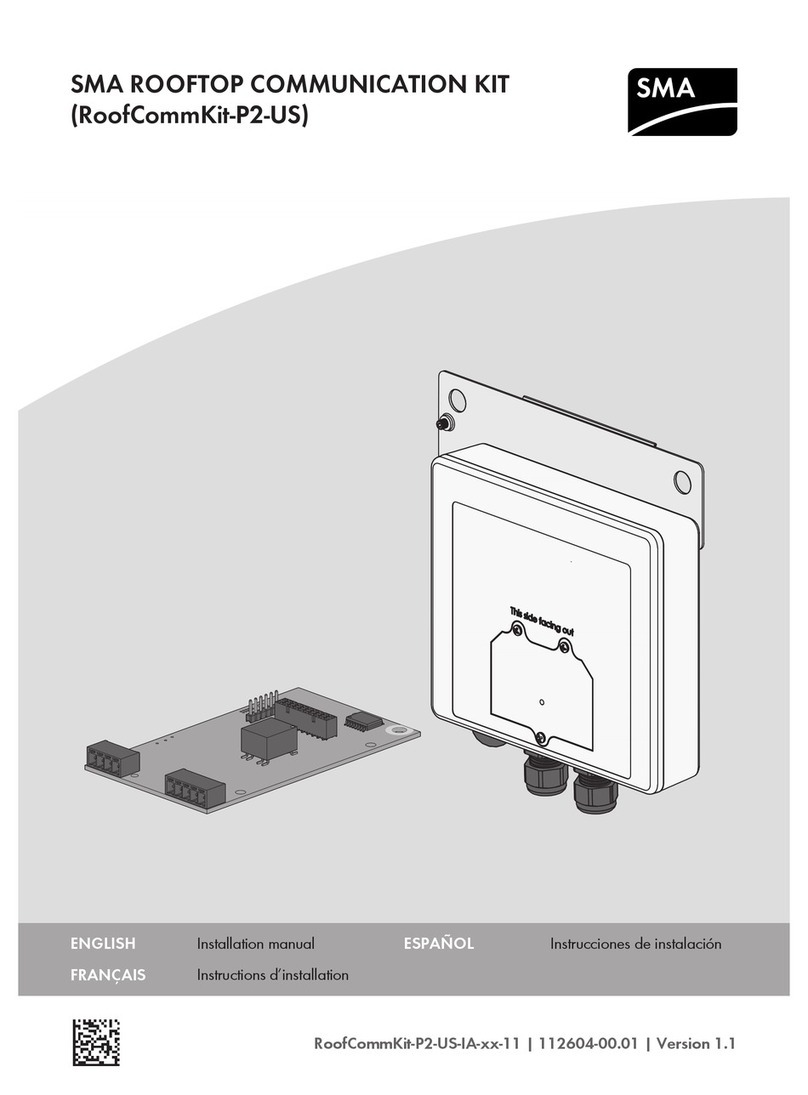
SMA
SMA ROOFTOP COMMUNICATION KIT User & installation manual
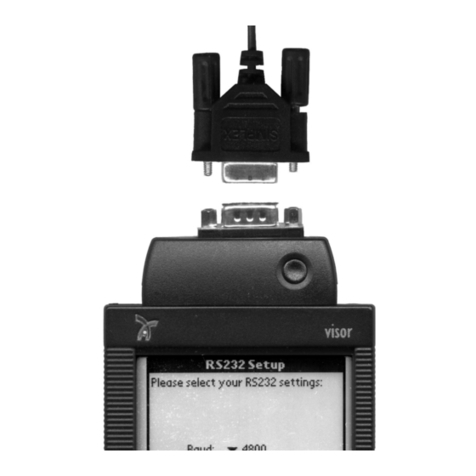
Shimpo Instruments
Shimpo Instruments Data-Pro instruction manual
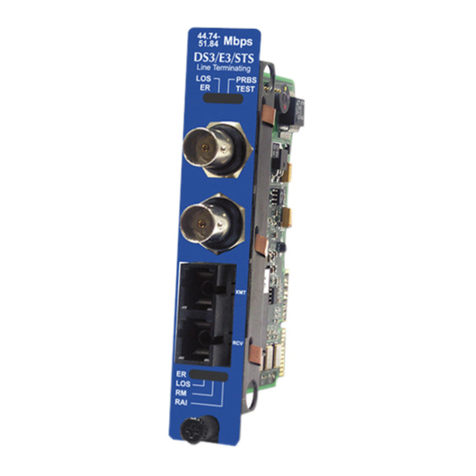
B&B Electronics
B&B Electronics iMcV-DS3-LineTerm Operation manual

Bartec
Bartec PBTC-200 Operation and installation manual
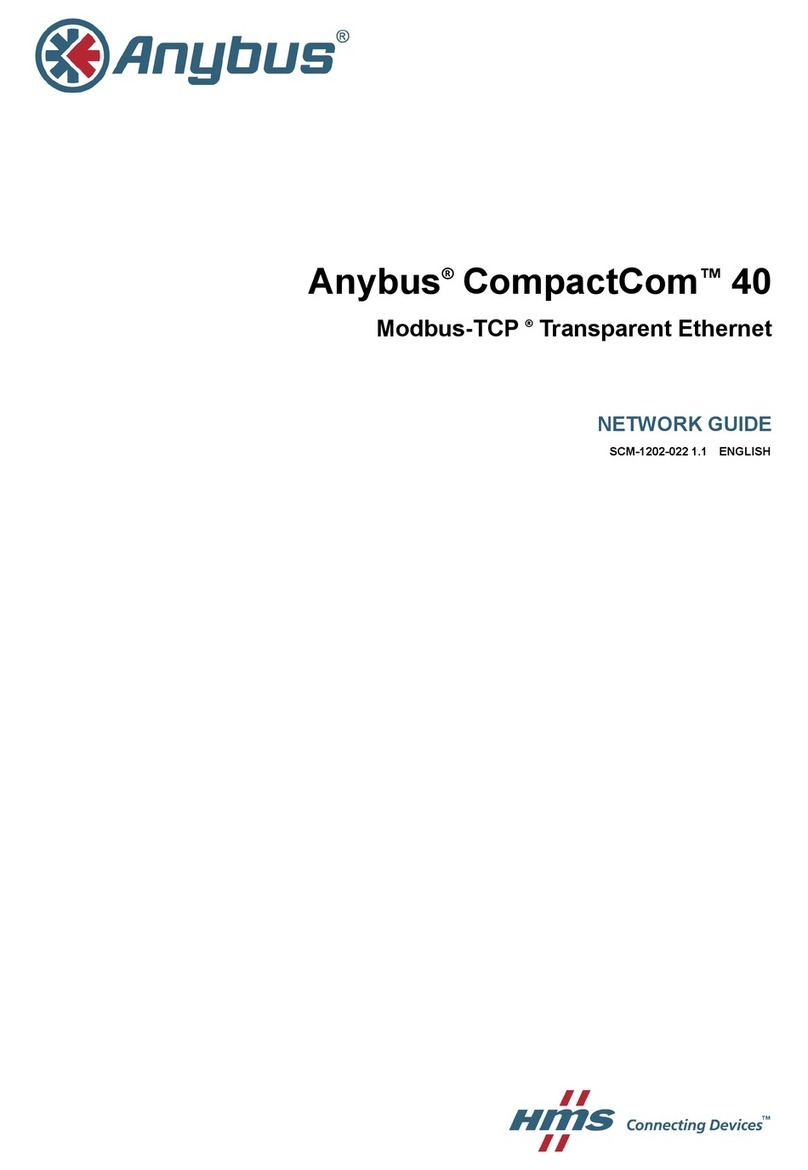
Anybus
Anybus CompactCom 40 Modbus-TCP Network guide
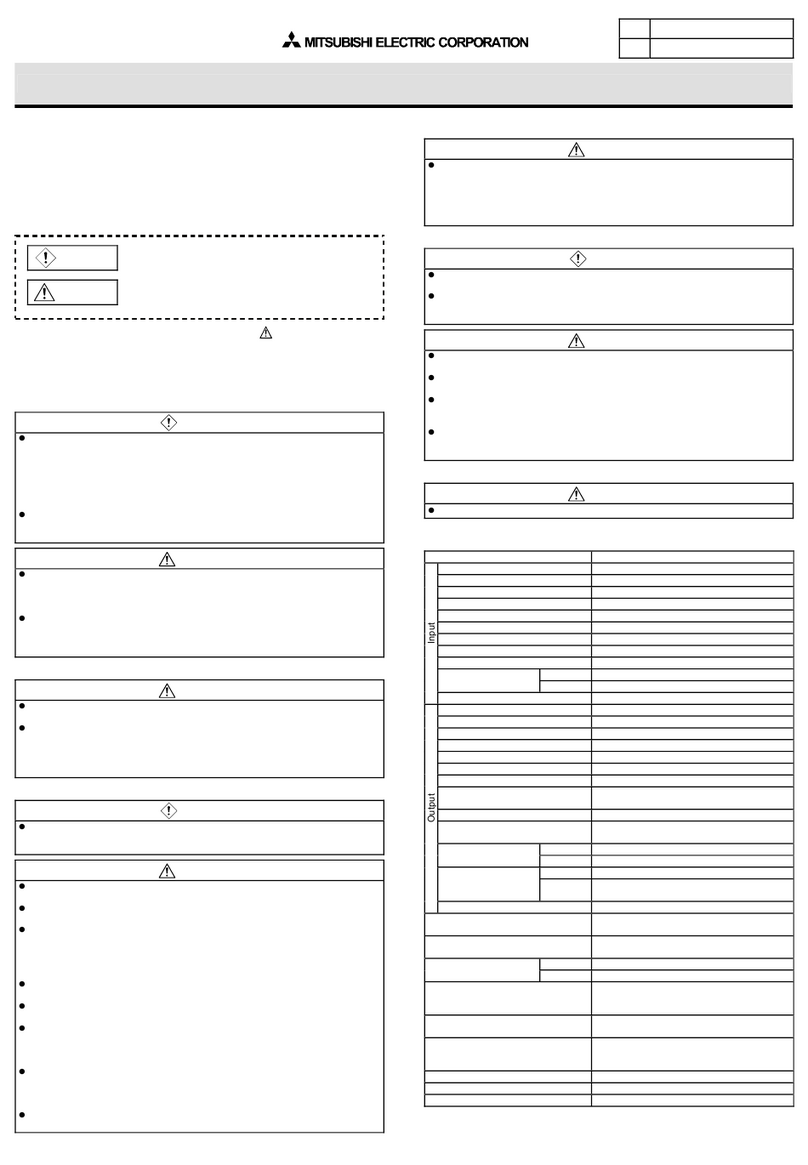
Mitsubishi Electric
Mitsubishi Electric AJ65FBTA42-16DT user manual
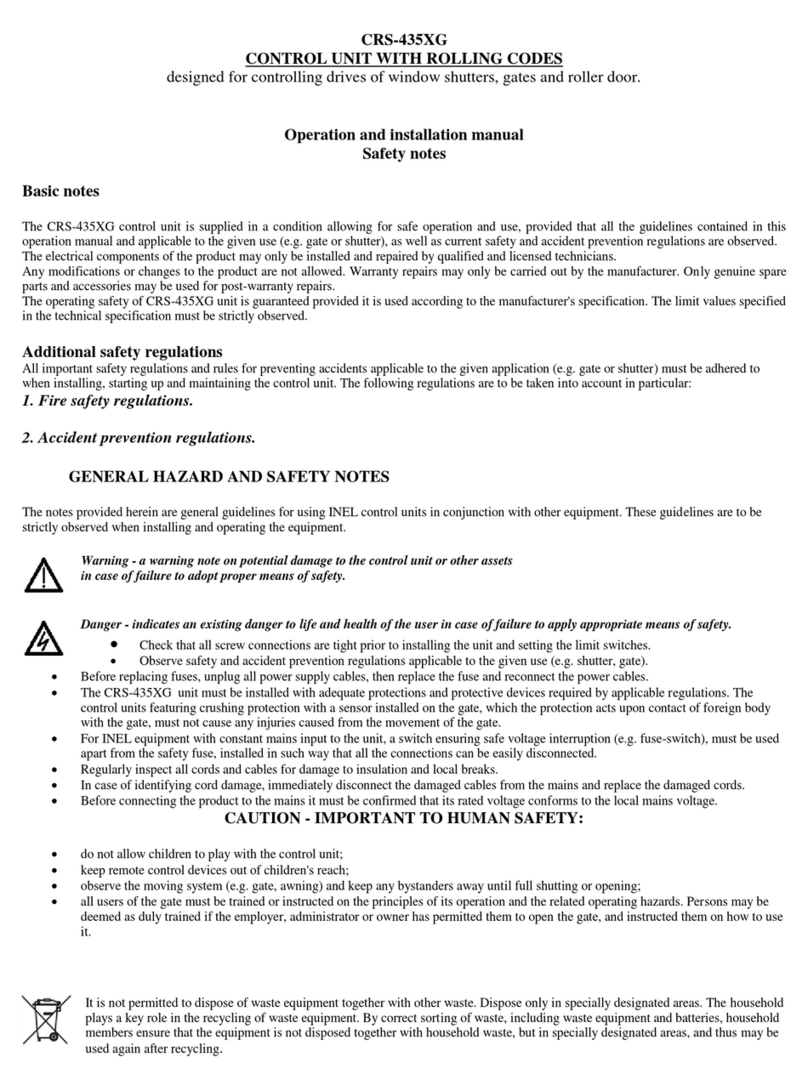
Inel
Inel CRS-435XG Operation and installation manual, Safety notes
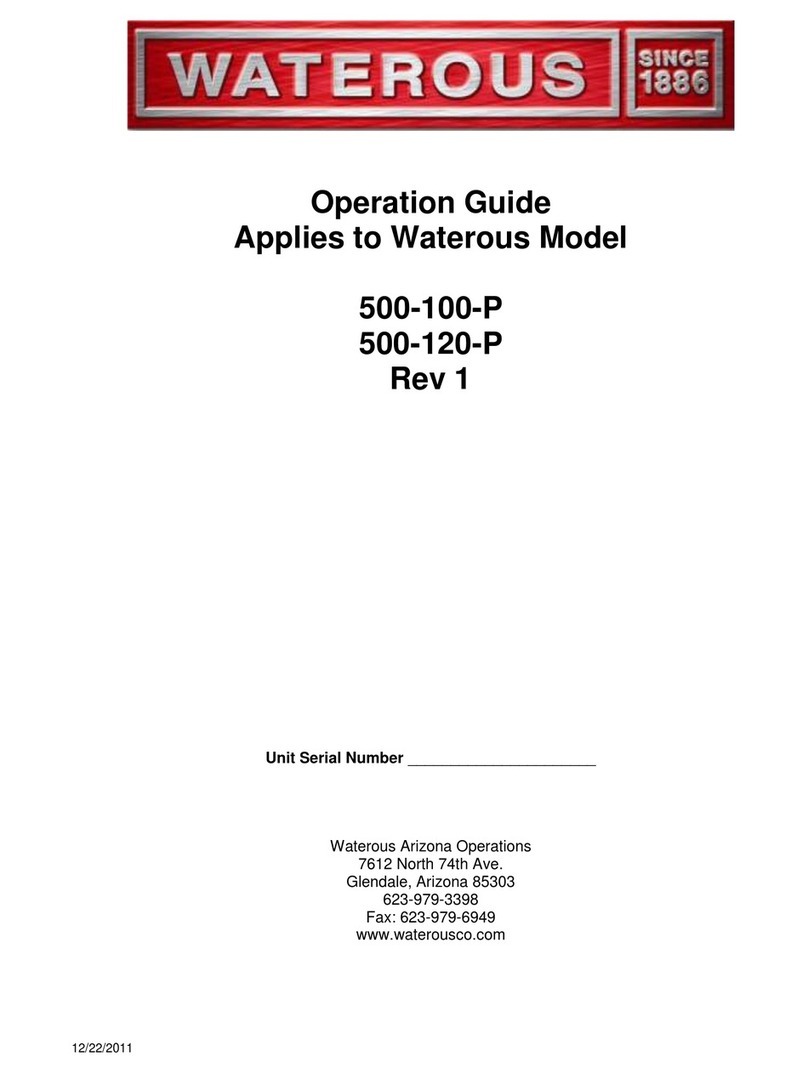
Waterous
Waterous 500-100-P Operation guide

Scantech
Scantech MA Series Operation manual
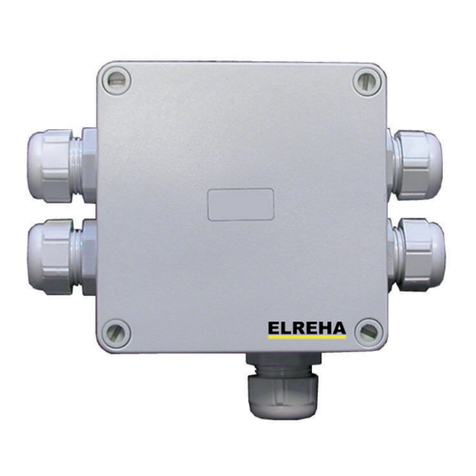
ELREHA
ELREHA BMT 2101 quick start guide
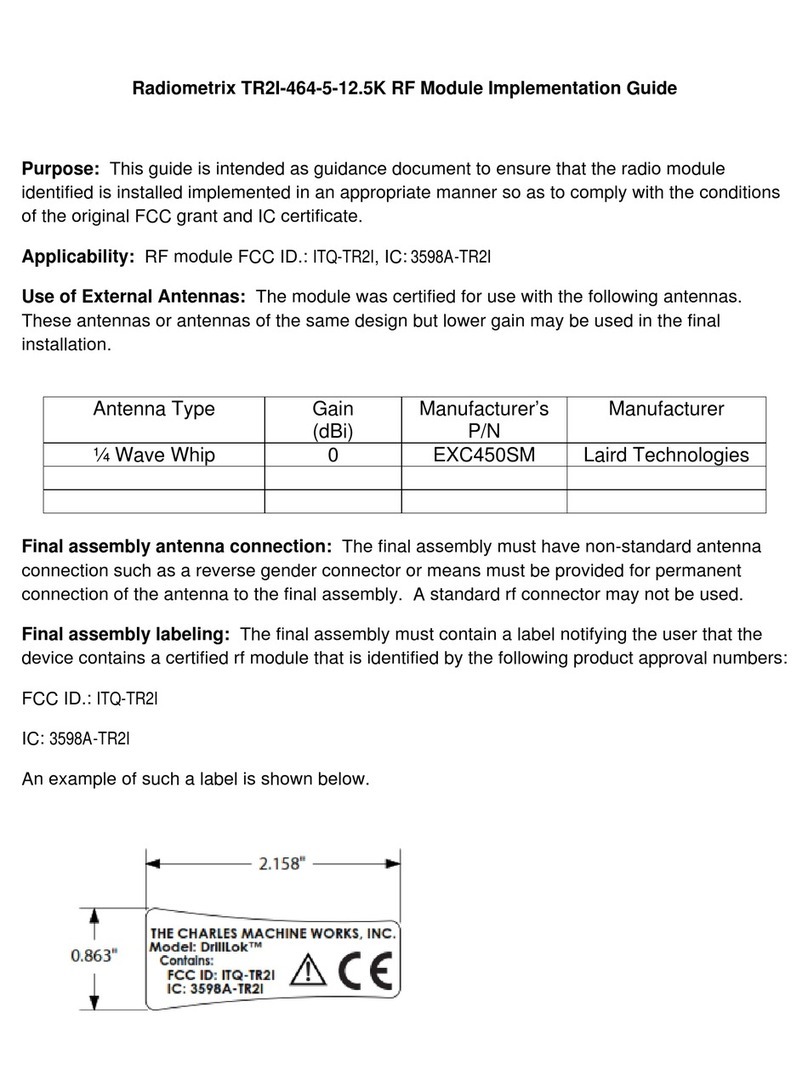
Radiometrix
Radiometrix TR2I-464-5-12.5K Implementation guide



